Keeping it Real: The Importance of Authenticity in Your Child’s Writing Life
If you want your students to care about writing, give them writing projects that actually matter.
If you want your students to care about writing, give them writing projects that actually matter.
Parents, I have an assignment for you. I want you to plan out a week’s worth of meals for your family, taking into account each family member’s likes and dislikes. Write out the grocery list, and be careful, because I’ll be checking to see that you didn’t forget anything and nothing is misspelled. When you’re finished, just file it away somewhere. We were never going to actually shop for the meals or cook the meals. I just wanted to see if you could do the assignment.
Any takers?... No? I don’t blame you.
Many kids feel the same way when they’re made to write without an audience beyond the assigning adult on the receiving end of their work. That’s why we need to seek out opportunities for authentic writing for our young writers. Authentic writing refers to writing that is done for a real purpose and for a real audience. Authentic writing is intrinsically motivating and helps to provide kids with a sense of the potential power of having strong writing skills.
Here are five suggestions for adding some authenticity to your homeschool’s writing program:
1. Do Business.
Have your student write a letter or email to a business. The content can either be full of praise for a job well done or dismay at a poor experience. This is a great time to talk about tone and professionalism. One of the best things about this assignment is that more often than not, kids receive replies to their missives. When I’ve done business letter assignments with classes before, students have even received autographed photos, coupons, and letters signed by CEOs. Talk about gratifying!
2. Review.
Amazon, Yelp, Google, and Rainbow Resource are just a few of the abundant opportunities online for leaving reviews that will be read by a wide audience. Use the existing reviews rated as “most helpful” as mentor texts to help your student draw conclusions about what makes a good review.
3. Blog.
Whatever your young writer chooses as the focus of his or her blog, it’s a great opportunity to share something with friends and family.
4. Slam or Snap.
Book clubs aren’t the only literary reason to gather people together. Consider hosting a poetry café or poetry slam with other homeschooling friends. Everybody gets to share an original poem.
5. Serve.
Can you find a way to serve your community via writing? You might consider teaming up with a local nursing home or assisted living community to record the life experiences of elderly people. Kids stand to learn so much from seniors who have experienced the history they’re learning about, and families will no doubt be grateful to receive a written record of their loved ones’ stories.
10 Family Habits that Foster Lifelong Readers
A love of reading comes naturally for some kids and not-so-naturally for others, but you can do a lot to make your home a space where reading is an important part of everyday life.
A love of reading comes naturally for some kids and not-so-naturally for others, but you can do a lot to make your home a space where reading is an important part of everyday life.
1. Curate Book Baskets and Shelves
Especially for younger kids and reluctant readers, walking into a library or confronting a full bookshelf can be intimidating. A sparse bedroom shelf lined with books whose covers face out can help a child locate a book for independent reading time that matches up with that week’s interests. Curated book baskets are wonderful for giving kids choices within limits that help reading seem friendlier.
A few book basket ideas:
Teething-friendly books for the youngest readers
A selection of readers — any of which would work for your emergent or beginner reader’s current level
Books about trucks, puppies, bugs, or ponies — whatever your child’s current interest
A selection of books that fit bathroom reading criteria — books divided up into short selections that are funny or interesting (like comics)
A basket of WWII historical fiction choices to complement WWII history study
2. Never Leave without a Book
Richard Larson, a professor who studies queueing theory at MIT, says that the average person spends a cumulative 1 to 2 years of life waiting in lines. Startling statistics aside, I think we can all agree that we spend lots of time waiting — waiting at the dentist, waiting for takeout food, waiting in the car for a train to pass. Sure, that time could be spent playing Candy Crush or scrolling through Facebook (or picking a fight with your sibling), but wouldn’t it be better spent reading? Make it a rule that everybody leaves the house with something to read.
3. Celebrate with a Bookstore Visit
You may think I’m a monster, but I told my kids at the outset that there is no Tooth Fairy. Of course, they still want to cash in on their discarded teeth, though, so I like to offer them a trip to the used bookstore instead of money. While we’re there, I’ll offer to pay for a few 75 cent readers of their choosing. There are a million little things in life that we celebrate as families. It’s wonderful to attach some of those small celebrations to books.
4. Institute the Weekly Library Visit
Make Library Day a thing that happens every week on the same day. Not only will regularity make it a valuable part of the routine, but it will also help you stay out of trouble with overdue fines.
5. Subscribe to Magazines
We adults get inundated with mail, but getting mail is so special to kids. Tap into that feeling of specialness and create positive connotations with reading by getting a magazine subscription for each child.
6. Make Readaloud Time Part of the Routine
Readaloud time is one those things that’s easy to let slip past, so we need to build it into our daily routines. At our house, we have two read-aloud times. We start the school day with historical fiction related to our unit of study and read fiction that’s more focused on entertainment value at bedtime.
7. Make Independent Reading Time Part of the Routine
We all want our kids to spend time reading, but sometimes we forget to make time for it to happen. Just like read-aloud time, we have to make independent reading time a family norm that has its own space set aside in the day.
8. Listen to Audiobooks in the Car
I will admit that I resisted audiobooks for a long time. I didn’t have the right technology in my car, the library didn’t have the best selection, blah, blah, blah. I actually decided to suck it up and give audiobooks a try in the name of taming backseat squabbles. It worked to a degree I didn’t even imagine possible. Oh, and now we’re all digesting about two more quality books per month than we used to. Seriously, try audiobooks even if only for the peaceful car rides.
9. Read and Talk about Reading
This is directed toward the adults. If you want your kids to believe that reading is important and worthwhile, you have to model it. Make sure that kids have opportunities to see respected adults of both genders reading and valuing reading.
10. Geek Out as a Family about a Story
Later this summer, we’re (finally) visiting The Wizarding World of Harry Potter. Obviously, the day at the theme park will be magical in all senses of the word, but leading up to it, we are having so much fun immersing ourselves in the story together by reading the beautiful illustrated editions of the books, coloring Harry Potter coloring books, crafting wands out of mismatched chopsticks, watching the movies, and assembling Harry Potter jigsaw puzzles. Geeking out over a story as a family goes beyond just telling your kids that reading is important. It shows them that the world of the imagination is important, that reading is cool, that they can get lost in stories even when they grow up, too.
Teaching Literature-Based History without a Curriculum
Truly, the biggest hurdle to cobbling my own history curriculum together has been organizing the resources in such a way that I know where they are, I remember all of the ideas that I had, and I don’t leave anything out.
“Truly, the biggest hurdle to cobbling my own history curriculum together has been organizing the resources in such a way that I know where they are, I remember all of the ideas that I had, and I don’t leave anything out.”
I must have filled in so very many history worksheets as a kid sitting at a desk with a textbook, but I can’t tell you much that I learned sitting in that desk. The truth is that most of the history I learned as a kid came from Bill and Ted’s Excellent Adventure and historical fiction that I found on the library shelves. For that reason, I knew that I wanted to take a literature-based approach to history with my kids.
The secular homeschooling community isn’t exactly awash in literature-based options, though. Last year when I couldn’t find anything that would work for teaching early American history to my 2nd graders, I decided to wing it. We made our way from prehistory through the colonial period, and this year in 3rd grade we’re attempting to read our way through the Revolutionary War through the Civil War. Given how many great books and resources are out there, it hasn’t been so hard to put it together myself, and, as so often happens in homeschooling, I’m learning considerably more than I knew before.
Truly, the biggest hurdle to cobbling my own history curriculum together has been organizing the resources in such a way that I know where they are, I remember all of the ideas that I had, and I don’t leave anything out.
My solution to the organization issue is creating a collection of spreadsheets for the year. I divide the year up into units, with each unit getting its own spreadsheet. This year, my spreadsheets are titled Revolutionary War, Westward Expansion, Slavery, and Civil War. Those with older children studying in greater detail may also want to divide larger units into mini-units and give them their own spreadsheets. For example, World War II might be divided into mini-units such as The Role of Women, Allies and Axis Powers, The Holocaust, The Homefront, and Military Technology.
The spreadsheet has two purposes. First, the spreadsheet serves as a comprehensive list of all of the resources I’d like to use within a unit. It includes field trips, historical fiction selections, selected activities from supplemental resources like History Pockets, nonfiction literature, videos, poems, and audiobooks.
The spreadsheet’s second purpose is to help me keep track of where things are. My columns at the top are On Hand, Library, Field Trip, and Activity. Given how many books we’ll use, it’s important to keep track of which books I have on hand at home and which books I’ll pull from the library shelves. This makes it easy, too, for putting together our list for the library. The Field Trip column serves as a visual reminder for me to make room on our calendar and take any necessary planning steps to pull off the field trip. In the Activity column, I mark the page on which the activity can be found and the acronym for the book it can be found within.
In addition to my spreadsheets, the other organizational tool that keeps my DIY literature-based history curriculum humming is a milkcrate. I’ve pulled every history resource I’ll use for the year and placed it in the milkcrate for ease of finding. It helps to avoid all of those awful times when you’re meandering around saying, “I know we have it somewhere, but I can’t find it.”
Whatever period of history you’re studying with your kids this year, I hope that these organizational tips can help you feel more in control of the sprawl that comes along with studying history with literature.
(We’re Amazon affiliates, so if you purchase something through an Amazon link, we may receive a small percentage of the sale. Obviously this doesn’t influence what we recommend, and we link to places other than Amazon.)
The Power of Thinking Aloud
Want to raise critical thinkers? Showing them — out loud — how you think critically is a good place to start.
Want to raise critical thinkers? Showing them — out loud — how you think critically is a good place to start.
When our children are small, we parents guide their language development by explicitly demonstrating how language works. To get our kids using language, we make exaggerated shapes with our mouths, point to pictures to make vocabulary connections when we read aloud, and quiz toddlers over animal onomatopoeia.
When kids get older, though, sometimes that tendency toward showing children how things work can evaporate, especially when it comes to more advanced language skills.
As children get older, language arts instruction tends to shift more and more toward a model of asking the child to do work and then telling the child what he or she did incorrectly after the work is finished. Kids are assigned pages of reading and comprehension worksheets or they’re given a writing assignment that will be critiqued by a more skilled writer after the writing is finished.
Instead of only interfering in the end product, though, wouldn’t it make more sense for that more skilled writer or more skilled reader, in this case a homeschool parent, to share his or her expertise during the learning process when the potential for knowledge building is at its greatest?
“Talking to our kids about how we comprehend will yield better results than a whole pile of comprehension worksheets. ”
Readalouds are an ideal time to model the thinking skills that you want your children to achieve. When a character innocently coughs, don’t keep what you know from your experience with reading Victorian novels to yourself. Tell your kids that a cough almost always foreshadows a character’s illness and often a character’s death. When a character dons a coat or an umbrella, talk to your kids about what you can infer about the setting from that little nugget of information. When you reach the end of a chapter, practice making predictions about what’s to come. When a sentence is confusing and you feel lost, demonstrate backing up and reading it slowly and deliberately until it does make sense. Talking to our kids about how we comprehend will yield better results than a whole pile of comprehension worksheets.
When it comes to writing, don’t check out after you’ve handed down an assignment. Work alongside your child to model exactly what you’re thinking as you brainstorm about a topic, organize your thoughts, and construct a thesis statement. You don’t necessarily need to complete the entire assignment yourself, but talking your child through the speed bumps that are slowing him or her down is far more effective than passing down a judgement after the work has already been done.
Much like we teach our children habits of brushing their teeth, making their beds, or clearing their places at the table, it’s up to us to teach our children the habits of good readers and writers, and there’s no better way to do that than by graciously sharing our thoughts when we read and write.
Re-Energize Language Arts at Your House with Service Learning
Maggie has some great ideas for giving your student’s writing a boost with a combination of project-based learning and community service.
Maggie has some great ideas for giving your student’s writing a boost with a combination of project-based learning and community service.
“Why do I have to do this?”
Maybe you’ve gotten this complaint disguised as a question from your homeschooler. Honestly, it’s not a bad question. You and I understand that completing just about any writing project in earnest builds the writing muscles kids will need to be skilled writers for advanced academics and life as a successful adult, but for kids it may not always feel that way.
Just like all of us, kids want authentic experiences. They want their work to have a life beyond being just a checked off requirement on a teacher-parent’s to do list. And just like us, kids want to feel that what they do is meaningful and that it helps someone else.
If you find that language arts has lost its luster at your house, consider trying a service learning project. What is service learning? Service learning is a project-based approach to education that incorporates community service. Kids who complete service learning projects make real-world connections to what they’re learning about. It’s a chance to do work that’s really meaningful and a chance to build kids’ self esteem by seeing that they are capable of easing someone’s loneliness or anxiety, of making a difference in the life of someone else.
As with all project-based learning, to get the most out of the project, it’s best to turn over as much ownership as possible to the student. From choosing a project to delivering the final product, the adult’s role is to offer guidance and mentoring, and students should be doing the work. After all, it’s the person doing the work who does the learning.
Ready to give it a try? Here are a few ideas to inspire you and your kid:
Record an older person’s stories
Visit with an elderly person, perhaps a lonely family member or a resident of a nursing home or assisted living facility. Prepare a list of questions, consider interesting historical events that your subject may have experienced, and bring a recording device along or take notes as you listen to your subject. After your interview, polish what you have learned into an interesting narrative that incorporates imagery and dialogue. Present your subject with a copy of your finished product.
Read to shelter animals
Connect with your local animal shelter to volunteer your time reading to shelter pets. My own kids are eager participants in our local Humane Society’s “Reading Team.” Kids enjoy reading to the animals, and animals benefit from the human socialization by becoming more adoptable.
Write a brochure for your co-op for new kids
Being the new kid anywhere can be daunting. Create a brochure that can be distributed to kids who are new to your co-op that helps them understand the rules, culture, and opportunities.
Write a play (perhaps a retelling of a favorite story) and perform it for seniors
Adapt a beloved story into a script or create a drama of your own. Practice, practice, practice, and then perform your creation at a senior center, adult daycare, assisted living facility, or nursing home.
The Bigger Picture of Multiple Intelligences
Thinking beyond a single learning style can open up the possibilities in your homeschool. Maggie explains how it works for her.
Thinking beyond a single learning style can open up the possibilities in your homeschool. Maggie explains how it works for her.
“Find out your child’s learning style.” It’s advice that’s frequently given to new homeschool parents, and it’s not bad advice. Certainly, the more we can know about our children as learners, the more effectively we’ll be able to tailor our efforts to their needs.
Howard Gardner’s Theory of Multiple Intelligences proposed that there are eight different types of human intelligence (musical, visual, verbal, logical, kinesthetic, interpersonal, intrapersonal, and naturalistic), and he later added existential and moral to his list of intelligence modalities. There are plenty of resources out there for determining your children’s learning style. You might simply read a description of each modality and realize that it fits your child’s aptitude to a tee, or you might decide to take a quiz to narrow down your child’s top intelligence modalities. Either way, it’s a handy little nugget of knowledge to have about your child.
When you hit a proverbial educational wall with your child, it can be valuable to consider your child’s strongest modalities. A child who is struggling with division and has strong kinesthetic intelligence might finally “get it” by walking along a number line and placing a marker to divide the number line into equal parts. A musically-inclined child who struggles to memorize the parts of speech might finally be able to recall the definition of an adverb by singing School House Rock’s “Lolly, Lolly, Lolly, Get Your Adverbs Here.”
At the same time, I think that sometimes multiple intelligences are misunderstood. Sometimes people think that when they discover their child is strongest in one area, it’s best to focus only on learning via that method. The thing is that all people are capable of learning using all of the intelligence modalities. In fact, it’s best if we can teach using as many of those modalities as possible. When we’re using methods that appeal to many of Gardner’s intelligences, we’re taking a multi-sensory approach.
Why is it important to use a multi-sensory approach? In a homeschool setting, there are two major advantages:
Appealing to more than one sense (or type of intelligence) means more pathways to learning. If you’ve had the privilege of sitting in on a good lecture, you know that you can learn a lot just from listening to a dynamic, knowledgeable speaker. If that speaker either draws or uses a slide of a visual organizer that illustrates his or her talking points, that learning becomes even more clear for you. Then, if you record the speaker’s words and visual organizers by hand onto your own paper, your knowledge of the lecture content is yet further enhanced.
When students make more connections in the brain by using multiple senses, long-term learning is more likely to happen. A young child might see the letter s on a paper and then recall the “sssss” sound she made while she carved the letter shape into a pan of shaving cream, which reminds her of the “s” puzzle piece she manipulated in her hand, which reminds her of when it was her turn to say “s” when she and her mother took turns singing the letters in the alphabet song.
Research shows that knowledge occurs in webs, or, in other words, that we build knowledge by attaching it to other knowledge. Let’s help our kids build really great webs with plenty of diverse strands that attach in many ways.
5 Dyslexia Truths that Everyone Needs to Know
As many as one in every five people may have some kind of dyslexia — here’s what you need to know to be an ally and advocate for dyslexic homeschoolers in your circles.
It’s estimated that as many as one in 10 or even one in five people is dyslexic, but there are still so many untruths about dyslexia floating around. Even if someone in your family isn’t dyslexic, it’s almost certain that someone you care about is. Here are five truths to help you be an ally and advocate for those people in your life.
Myth: Dyslexics see letters backwards.
Truth: Dyslexia is a not a vision problem (though vision problems can be comorbid with dyslexia). This misconception comes from the letter reversals that dyslexic children commonly make. Neurotypical adults easily see the differences between b, d, p, and q. To a dyslexic child, however, those letters can be quite confusing. A chair turned to the left, to the right, or upside down is still a chair. But each turn of what is essentially the same letter shape makes a different letter. That can be really difficult to pin down for someone who struggles with working memory or visual processing issues. It’s also important to note that many dyslexic children don’t reverse letters at all.
b
A chair...
d
still a chair...
p
still a chair...
q
And Still a chair.
Myth: Kids with dyslexia just need to try harder.
Truth: Children with dyslexia are trying harder than you can imagine. They want to be able to read. They want to be able to keep up with everyone else, but no amount of trying harder will change their physiological differences that make it virtually impossible to learn from routine literacy instruction. Rather than our judgement, dyslexic kids need our compassion, patience, and efforts to specialize instruction to the ways they can learn.
Myth: If kids are having a hard time learning to read, just relax and wait until they’re older.
Truth: If there’s one widespread myth within the homeschooling community that needs to expire, it’s this one. Children do not outgrow dyslexia. It’s a lifelong condition. Waiting even a year to provide help for a child who may have dyslexia means a vital, precious year of intervention that is lost. It’s another year of letting a child’s self esteem suffer as he or she believes that everyone else must be smarter. It’s losing even more ground that that child will have to make up.
I love that in homeschooling we have more time to let our children’s gifts and abilities unfold in their own time, but experts agree that suspected dyslexia needs attention, and it needs attention early.
Myth: Kids have a hard time learning to read because their parents didn’t read to them enough.
Truth: Talk to parents of dyslexic children, and you may be surprised to find out that they’ve read early and often to their children. I started reading to my children on the day they were home from the hospital, and even now, I read aloud to them for at least an hour every day. Their comprehension and vocabulary are extraordinary, but my efforts didn’t change the fact that their brains are wired differently.
Myth: If we make accommodations (like the use of audiobooks) for a dyslexic child, it will be a crutch, and the child won’t be able to be successful in college.
Truth: On the contrary, if we want dyslexic children to succeed in college and careers, we need to help them learn about the accommodations that work best for them in adapting to a neurotypical world. Giving kids practice with tools like audiobooks, text-to-speech software, and C-Pen Readers will help them focus on the information that inundates them in this new setting rather than struggling to also find a way to make that learning feasible.
Accommodations for dyslexic people aren’t unfair, and they don’t encourage laziness. They’re simply a way to level the playing field. We couldn’t deny a wheelchair ramp to a physically disabled person, and we shouldn’t deny accommodations to people with learning disabilities either.
Related Posts
Grammar Is as Grammar Does
Understanding the rules of grammar is great, but knowing how to put them to use is what is really important.
Every year without fail, I’d have kids who entered my ninth grade English class not knowing the parts of speech. No kidding, about half of the kids who came through my classroom door couldn’t tell me what an adjective is, let alone label one in a sentence. I spent a few years being flabbergasted about it and trying to be the hero teacher who would finally help my students grasp a basic that had heretofore eluded them. It wasn’t until I came into my own as a teacher that I decided to say, “So what? Grammar is as grammar does.” I realized that, short of a Jeopardy-contestant situation, most of us will never need to call upon our knowledge of the definition of a subjunctive clause. We all, however, need excellent writing skills to succeed in careers, to be engaged citizens, and to avoid looking like a cotton-headed ninnymuggins on Facebook.
That’s when I decided to chuck the weeks of class time I might have spent on grammar book exercises and jump headlong into helping students address the grammar gremlins that were haunting their writing. They were happier, I was less frustrated, and their writing benefitted in ways that no hammering of the nuances of grammatical study could touch. And sometimes on Fridays we’d do Mad Libs, which never made anybody slam a book shut or tear up in frustration.
Now, this isn’t to say that you shouldn’t do any formal grammar instruction in your homeschool. By all means, please, give your younger students a strong foundation in how our language works.
But, if by the time your kids have reached high school, you’re both still tearing your hair out trying to grasp all of that jargon, I’m telling you that it’s okay to let it go. LET IT GO. Spend that time working on the writing that’s in front of you, learning from mentor sentences, finding the errors your student makes habitually and digging in to address those issues.
Your kid’s employer or college admissions officer won’t care if he or she can diagram a sentence. What will matter is whether he or she can produce a well-crafted piece of writing.
How to Support Overwhelmed Beginning Readers
When early readers feel overwhelmed, there are practical things you can do in your homeschool to help them build their reading confidence.
Years ago, I decided to try out a step class at the gym. I arrived early and scouted out a front-row spot because, by golly, I’m a go-getter. The teacher was so friendly as she introduced herself and welcomed everyone to class. And then the horror began. With music blaring and commands flying, everyone knew the steps but me. When they were already onto the next move, I was struggling to replicate the last move. And I was in the front row. The front row. Everyone could see how much I was struggling, how much I was failing. It was mortifying. With almost a full hour of class remaining ahead of me, I gave up. I gathered my things and slunk out of there through a path of people effortlessly doing all of the moves that I just couldn’t figure out.
No doubt, you’ve had some moment in your life when you felt yourself flailing like I did at step class. You know that feeling — the humiliation, the sense of being underwater, the injury to your confidence.
Some of our beginning readers feel that way, too. But reading is a critical skill, so giving up and slinking out of class isn’t an option for them. Our job is to make it less overwhelming, to throw our kids the support they need to keep their heads above water.
Here are my real life tips for taking some of the tears and terror out of reading.
Try Shared Reading Books
Shared reading books feature two-page spreads with one page to be read by the parent and a more simple page to be read by the child. Usborne offers some fiction shared reading selections in their Very First Reading Collection. In addition to fiction readers, the We Both Read series published by Treasure Bay offers some fantastic nonfiction selections at a variety of levels.
Be an Ally with Buddy Reading
When a child is struggling, opening up a book and seeing all of those words on all of those pages can feel defeating at the outset. Make the task feel smaller by taking turns with buddy reading. The child reads one page, you read the next page, the child reads the next page, and so on. Not only does buddy reading give the child a break, but when a child’s fluency is low, causing reading to be disjointed and jerky, the pages read by the parent can be a big comprehension help.
Find a Furry Audience
Lots of libraries have read-to-a-dog programs these days. When they’re done well and with a minimal audience aside from the dog, they really can be motivating for a child. At my house, we’ve also had success with our Humane Society’s Reading Team program. My kids have “work” shirts, they sign up for shifts, and they wear badges at the shelter that identify them as volunteers. In their orientation, they learned that reading to the shelter pets improves the animals’ socialization level, which makes the animals more adoptable. They take their job very seriously, and the results are real. While it can be a struggle for one of my kids to make it through half of a reader at home with me, the same book might be read twice in its entirety at a Reading Team shift. Win-win-win.
Make Peace with Hitting the Pause Button
When our kids are struggling, we feel a lot of pressure to push, to get them caught up. The thing is, though, that if you’re pushing your child to continue beyond his or her point of frustration or exhaustion, you’re hurting more than you’re helping. It’s okay to be gentle, and it’s okay to push the pause button. Coming back to it hours later (or even the next day) will be much more fruitful.
Lots of Pictures, Lots of Colors
If you have a spread of workbooks in front of you, which one are you most drawn to? One with crowded pages and lots of black and white text or one with lots of colors, pictures, and open (or negative) space that gives your eyes a place to rest? Just about all of us would pick up the colorful choice first, and we’re grownups. Pictures and colors are inviting. For a child who’s struggling, the importance of that can’t be overstated.
Use GRL to Find Appropriate Books
Most books that you find on the early reader shelves at the bookstore or library are labeled with a 1-2-3-4 system, and it’s a system that a lot of us find fairly frustrating and misleading. How many times have you opened up a level 1 reader and wondered, “How in the world is a beginner supposed to know this word?” A system I find to be much more accurate is the GRL system, which uses a wider range of alphabetic leveling. In fact, when I when through our own collection of books and labeled each with a GRL level sticker to help my children find choices that would be accessible to them, I was surprised to find that some of our “Level 1” books were rated at the same GRL as some of our “Level 3” books.
It’s fairly easy to find the GRL of most children’s books via Google search, and the Scholastic website also offers tools for finding a book’s GRL or browsing books by GRL.
The Problem with Writing as a Punishment
When you use writing as a form of punishment, every writing assignment can make kids feel like they're in the homeschool version of detention.
When you use writing as a form of punishment, every writing assignment can make kids feel like they're in the homeschool version of detention.
When your kids misbehave, what punishments do you use? I’m guessing that you don’t punish them with ice cream or a new toy. You probably don’t offer to bake cupcakes with them or have a family movie night. That wouldn’t make any sense, would it? I mean, why in the world would you reward bad behavior with something fun? When our kids make poor choices, we parents hand down punishments or consequences that we hope will cause our children to reflect on what they’ve done, that might lead them to remedy their wrongs, that will improve the chances of them making a better choice next time.
Sometimes well-intentioned parents try to correct laziness or transgressions with writing assignments. Whether it’s the classic “I will not…” sentence copied over and over, spelling words copied many times beyond any real learning purpose, or an apologetic reflection letter, I’d like to encourage you to reconsider using writing as a punishment.
The thing is that if you use writing as a punishment, all writing assignments will feel like punishment to your child. And that’s not what writing should feel like. It should feel yummy like ice cream, stimulating like a new toy, challenging like baking, and fun like family movie night. Kids are smart. They know that if we use something as a punishment, it must be because it’s something we find distasteful. If writing is used as a punishment, without ever uttering the words, we are teaching children that writing is undesirable, that’s it’s something to be avoided.
I’m no parenting expert. I’m bumbling through this thing just like we all are. I do know, though, that if we want our kids to feel good about writing and feel good about themselves about writers, we have to leave writing out of the discipline mix and choose some other consequence that will get everyone back on the right path.
We tend to do unto our children what was done unto us, but I think that most of us in the homeschooling community would agree that just because something has always been done, it isn’t necessarily for the best. Let’s leave writing as punishment where it belongs — in the past.
A Resolution to Let English Be Part of the Humanities
Our culture needs the lessons of great literature like never before. In 2018, let’s resolve to elevate literature back to its position in the humanities.
Does English seem wildly different than it was in your school days? For me, high school English class in the 90s (at least for the good years) was presided over by a teacher who seemed like a wise guide who could help us walk through mental exercises that would lead us toward being thoughtful, competent, wise adults ourselves. I’m sure that the actual state standards were more detailed than this, but I imagine that our English teachers operated from a few major objectives: read good books with the students, talk about the big ideas in those books, and teach the students to write.
Then the standardized testing movement roared through our country and, along with pressure from the well-intentioned notion that every child should shoot for college admission, consequently English class became reduced more and more to a means to an end. Now, instead of pondering the choices that led T.S. Eliot’s J. Alfred Prufrock to have those overwhelming feelings of hollowness and regret, teachers are expected to spend more time checking that everyone can answer a question on the end of course test about an inference that could be made in line 40, which literary device is used in lines 23 and 24, or how context clues could be used to ascertain the definition of a word in line 32.
And it’s not just a thing that’s happened in public schools. Standardized test culture has influenced the homeschooling community as well, whether it’s because many of us are required by state guidelines to submit our children to periodic standardized testing, because we want to steer our college-bound kids toward ACT and SAT scores that will open up as many scholarship and admission opportunities as possible, because we know that we might need to place our children into the public school system and don’t want them to be completely unacclimated, or because of the pressure we feel from a culture that increasingly wants everything quantified.
But… have you read the online comments section lately on… well, just about anything? Whatever your politics, I think we can agree that people these days seem meaner and less empathetic.
Our culture needs the lessons of great literature like never before. In 2018, let’s resolve to elevate literature back to its position in the humanities. Let’s resolve to look to the big ideas in literature as a balm that will insulate our children from a world of keyboard bullies. Let’s resolve to look to books to help us remember those common denominators that unite us.
5 Spooky Writing Exercises for Your Little Monsters
Halloween is a great excuse for a little creative writing! Here are five ideas to add a little Halloween writing fun to your homeschool this fall.
Halloween is a great excuse for a little creative writing! Here are five ideas to add a little Halloween writing fun to your homeschool this fall.
The Haunted Mansion :: Creative Writing
Draw a creepy haunted mansion. Then do some research into the conventions of gothic literature. Write a gothic short story that’s set at your haunted house.
Monster Parts :: Expository Writing
Choose a partner, and then go into separate rooms, where each of you will draw a monster. Don’t share your monster drawings yet! Then, being as specific as possible, write directions for your partner to recreate your monster. Exchange directions and draw your partner’s monster exactly as directed. (No adding extra parts, and no oral additions to the directions!) Compare the original monsters to the partner-drawn monsters.
Garbage Pail a Menu :: Descriptive Writing
Have you noticed the Cabbage Patch dolls in the toy department? Back in the 1980s there was a yuckier counterpart to the sweet Cabbage Patch Kids, the Garbage Pail Kids. Their faces were drawn in a like fashion, but that’s where the similarities ended. Garbage Pail Kids were delightfully disgusting, so parents hated them, and kids loved them. Characters included Orange Julius, whose skin was being peeled off like an orange, Freddy Spaghetti, who had noodles oozing out of every hole in his head, Foul Bill, whose face was being smashed in by a foul ball, and Doughy Chloe, who was mixing her own head in a bowl.
Find a restaurant menu online, and then write a Garbage Pail Kids-style rendition of each item. Enjoy making your readers squirm with all of your graphically gross descriptions.
Flash Fiction :: Creative Writing
Flash fiction works are stories with a low word count, ranging anywhere from just a few words that imply a story to a couple of pages. Ask a member of your family to give you a number between 5 and 10. Write the scariest story possible using only that number of words. Write several very short stories, and then ask your family to vote on which one is your scariest.
Urban Legends :: Creative Writing
Urban legends are the scary folklore of our time. They aren’t true (though some of their elements may be based on facts), but people spread these tales to their friends and family as though they are, often warning them about some danger.
Read some examples of urban legends here. Then invent your own urban legend. You’re all set for your turn at storytelling the next time you’re sitting around a campfire!
5 Things to Try When Your Child Can Read, but Doesn’t
What about when a child has completed a reading program but still isn’t eagerly seeking out reading material? Here are five things to try.
You know those people who make you feel like you’re a failure as a parent if your child isn’t reading at least three years above grade level or reading chapter books independently by kindergarten? They push my buttons, too. Parenting has a way of keeping us humble. The reality is that sometimes even when we’ve tried doing all the “right” things, we still end up with reluctant readers.
What about when a child has completed a reading program but still isn’t eagerly seeking out reading material? Here are five things to try:
1. Book Teasers
Simply put, a book teaser is a brief read aloud from a book. To really boost your signal with book teasers, you’re going to need to do a little work on the front end. Choose a book that’s in your child’s “just right” reading zone (not too easy, not too challenging). It’s got to be the kind of book that sucks the reader in almost immediately, the kind of book that hooks a reader and demands to be devoured. During a readaloud time, you’re going to read just the first chapter of the book. If your child is resistant to readalouds, consider just starting without warning while the child is otherwise quietly engaged, maybe crafting, eating, or playing with Legos. Even if the child tunes you out at first, more likely than not, you’ll find that you soon have a listener who’s engrossed in the story in spite of him or herself. Then when you’ve finished that first chapter, ideally ending with a cliffhanger, you’re done, you big tease. When the child asks what happens next, let him or her know where the book will be located. Drop the mic.
2. Bathroom Books
Sitting on the toilet is boring. So is sitting in the car. Use that. Comic books and joke books are perfect candidates for bathroom and car book baskets because they’re practically irresistible to kids, and the format lends itself to just a few minutes of reading at a time. No, it’s not Shakespeare, but think of these as the gateway that will get you there one day.
3. Let It Be Fun
Would you be excited to pick up a new book if after finishing it, you knew that you would be required to write a book report, take a quiz, or answer comprehension questions? Sometimes with all of our great intentions, we adults have a tendency to steamroll all the fun right out of reading. Certainly, we need to attach thinking and writing exercises to books, but we don’t need to do it all of the time. If you have a reluctant reader, consider throwing out accompanying assignments for a while, and just let reading be fun. How will you know that they’re reading if they aren’t doing worksheets or answering comprehension questions? You’ll observe them reading, and, we hope, eventually talking to you about getting more books. Let that be enough, at least for a while.
4. Appeal to an Obsession
Whether it’s bugs, puppies, World War II, the Titanic, gymnastics, or… whatever, find books about that subject and keep presenting them. The more reluctant the reader, the more you should steer towards books that are picture heavy. I’ve yet to meet a kid who couldn’t be enticed to at least flip through a book or magazine about a subject near and dear to his or her heart.
5. Give Some Thought to the Possibility that There Might Be Something Else Going On
It’s not easy to let your mind go there, but if your child reads very slowly, struggles with following directions, or has a hard time retaining information, it’s worth a chat with your pediatrician or another developmental professional to see if an evaluation is appropriate for your child. A learning disability diagnosis can truly be a gift for your child and your family if it means getting directed toward therapies and accommodations that can open a world of hope and make learning fun again.
Do This Writing Assignment First
Coming up with a great idea can be the hardest part of creative writing — so make coming up with those ideas your first homeschool writing assignment of the year.
Journal writing instruction often relies heavily on pre-determined writing prompts, imperatives such as “Write about a time when you had to make a difficult choice,” or questions like “If you were an animal, what would you be and why?” Even though writing has always been something I enjoy, I have to say that I hate writing to most journaling prompts. It turns out that asking me to write about my most embarrassing moment is the best way make me forget every embarrassing thing I’ve ever done, at least until the next time I’m having trouble sleeping. And let’s be honest. So many writing prompts are just insipid. (Think: “If you had to wear a coat outside in the summer or a swimsuit outside in the winter, which would you choose and why?”)
Of course, writing to a prompt and staying on topic is a skill that’s critical for academic success, and I’m not saying that kids should never write to a prompt. When it comes to daily writing practice or journaling, though, there’s a much better approach.
Kids need to be coming up with their own writing topics and learning to filter their own experiences for writing inspiration. In fact, that’s what most “real” writers do. Obviously, no one gave J.K. Rowling the parameters of the Harry Potter universe and told her to write stories about it. She called upon a lifetime of observation and experience when she wrote her incredible novels. My reporter friend who is featured on the local news station’s more lifestyle-oriented hour of programming says that she usually needs to come up with her own ideas for stories, drawing upon things she’s seen, read, or experienced. As a blogger and freelance writer, I’m constantly jotting down ideas for future posts and articles as inspiration comes to me.
If we want our kids to be skilled writers, we need to equip them to do one of the most important things skilled writers do—generate their own ideas for writing.
That brings us to what I’d like to suggest as your first writing assignment for the year—the Journal Ideas list.
There will probably be days when your student writer sits down to a blank notebook page with plenty of bright ideas for writing after a morning of getting fired up over a news story, having an argument with a sibling, or experiencing gustatory bliss at the new pizza parlor. There will be days though, inevitably, when the blank page feels intimidating and the words to fill it just don’t come as naturally. Those are the days this list is for.
On the Journal Ideas list, your student should down write at least twenty things about which he or she has special knowledge or about which he or she could have something interesting to say. It helps to work alongside your student, creating your own list.
To get you started, here are ten things I’d put on my own list:
- High school marching band
- Lessons I’ve learned about teaching
- Books
- Childhood friendships
- Things I hate doing because I’m introverted
- Family vacations
- My dog Mimi
- Art
- Tina Fey
- Best and worst gifts I’ve given my kids
On the days when writing ideas don’t come easy, the Journal Ideas list is there to remind your student of the interesting things he or she has to say. For the days when it still seems hard to get started, it helps to pick an idea from the list and then pair it with a writing purpose (entertain, inform, persuade, express). Isn’t it funny how the more specific we get with our writing topics, the easier it is to write? My high school marching band idea seems pretty broad and generic, but if I narrow it down to a certain writing purpose like persuasion, it becomes easier to write about. Sitting down to that topic and purpose, I’d likely write with a local government audience in mind, sharing how my experiences in marching band were critical in crafting the person I became and persuading the officials to adequately fund the local schools’ music programs.
Encourage your student to keep revisiting the list. Creative thinking breeds creative thinking. Get your kid in the habit of looking for ideas to fill the Journal Ideas list with, and you’ll find yourselves much closer to where you’d like your writers to be, people who see inspiration in life and who are comfortable using written language to talk about the human experience.
The Most Important Change You Can Make to Improve Your Child’s Writing
I sat outside the high school band room simultaneously on the verge of either tears or a full-fledged panic attack. In my hands were the notes I had taken about the assignment due in two weeks: a research paper in MLA format with a minimum of five resources and no less ten pages. The number of research papers I had previously written? ZERO. The amount of guidance the teacher offered us? ZERO. Almost twenty years out from high school graduation, I remember only a handful of assignments from those years. That one, though? I doubt that the memory of my utter despair and desolation of my confidence as a writer will ever fade.
This experience was an extreme example, but my old teacher made a mistake that a great many writing teachers make. They fail to TEACH writing. Telling kids what you want them to write about isn’t teaching writing. Telling them how many pages they should write isn’t teaching writing. Lighting up their work with red pen marks after the work has been done isn’t teaching writing. That’s assigning and assessing writing.
So how does one TEACH writing then?
1. Mentor Texts. Mentor texts are samples of writing that come from skilled writers. They’re an important tool in both the pre-writing and drafting stages of the writing process.
Before writing, mentor texts can be studied and even dissected. A child writing an expository essay about a historical figure could study biographies to see what techniques biography writers use to begin their books. A child writing a book review could open up the Sunday newspaper to investigate the book and movie reviews written by professional writers to see how they write conclusions without saying, “You should read it, too.”
During writing, mentor texts can be a valuable reference. A child who is struggling with the mechanics of dialogue can refer to an admired novelist’s books to see how the rules of dialogue play out in “real” writing.
2. Modeling. Don’t worry—no one is asking you to put on a swimsuit or strut down a runway. Modeling in this case means that you own your role as the most skilled writer in your homeschool, dig in there right alongside your students, and show them how it’s done.
I know, I know. Writing is hard work. Actually, Hilda Taba called writing “the most complex of all human activities.” I promise you, though, that if you make the investment of chewing on a writing project alongside your child, you’ll be amazed at the improved outcome.
It’s worth noting that you don’t need to complete every step of the writing process every time to be successful with this teaching tool. Usually I find that it’s most important to be there at the beginning of each step in the writing process, and then it’s okay, even for the best, for me to get out of the way.
Probably the most important aspect of modeling is thinking aloud. Don’t just let your child see the product of your inner thoughts—speak your thoughts as you think them. It’s okay, too, to share when you struggle with something. “I’m really frustrated with this, so I’m going to leave it and come back to it later,” is a no-joke important lesson to learn as a writer.
Learning to write doesn’t have to feel overwhelming or bewildering. Using mentor texts and modeling absolutely has the potential to transform both the outcome of your child’s writing and the way your child feels about him or herself as a writer. Writing is hard. Don’t send them into the wilderness of words alone.
The Power of Now: Or Why Maybe This Is the Summer to Start that Homeschool Co-Op
[We are so happy to introduce you to the lovely Maggie Martin, who officially joins the HSL blogging team with this post! —Amy]
This time last year, my family was part of a great co-op. It was well-established, the enrichment classes were wonderful, and there were countless social opportunities for the kids. There was a prom, a graduation, a yearbook, a variety of clubs, and field trips.
I knew that we couldn't stay.
What?
The thing is that we lived an hour away. Devoting two hours of driving to and from classes one day a week was (almost) okay, but driving two hours so that my kids could do scouts or playdates with kids from their classes just wasn't practical. Every week I'd watch other families' kids falling deeper into real, lasting friendships, and it was a constant reminder that those friendships were the one thing that I wasn't providing my children in our homeschool experience.
I knew that a co-op move would have to happen to give my kids those deep-rooted childhood friendships, but moving in that direction seemed hopeless. I'd pored over the list of local co-ops for options that would be a good fit for secular members only to find a disappointing lack thereof. I'd even gotten a babysitter to attend an interest meeting for a new co-op forming at a local church in hopes that somehow that might work out for us. It didn't. Maybe one day I'd be brave enough to start a co-op in my little town that would be friendly to secular homeschoolers, but of course that time wasn't then. I was in the middle of building a new house, doing much of the work with my own two hands when I wasn't forging my way through lessons with my six-year-old twins.
Then when the 2016 summer issue of home/school/life downloaded its way into my life, I stumbled upon this highlighted passage from Gretchen Rubin's book Better Than Before: Mastering the Habits of Our Everyday Lives:
“I had to realize that there would always be excuses not to do the thing that is hard, probably really good excuses.”
"The desire to start something at the "right" time is usually just a justification for delay. In almost every case, the best time to start is now."
Those words crawled into my system and wouldn't stop swirling around my brain until I'd metabolized them.
I had to realize that there would always be excuses not to do the thing that is hard, probably really good excuses. And I had to realize that that saying about "The days are long, but the years are short," is no joke. It already felt like I'd put my babies down for naps only to turn around and find them starting the first grade. By the next time I turned around, those first graders would be perfecting their college admissions essays, and my chance to construct the homeschool experience I'd dreamed of for them would be gone forever.
So I decided to start that co-op. I made a To Do list that was about a mile long, and tackled every item one by one when I could steal a few minutes to do so. I communicated with the homeschool acquaintances I'd made in our community and shared my vision, I turned to our gem of a library when finding a meeting space was turning into a deal-breaker, and, most importantly, I focused on my devotion to my kids when the job seemed overwhelming.
By the end of the summer, I had accomplished what had before seemed impossible, and a year later, I'm boundlessly grateful that Gretchen Rubin's words found me in that home/school/life issue just when I needed them. The friendships my children have made this year are all the reward I need for the hard work I invested in our co-op's startup.
There will always, always be a reason not to do what is unfamiliar. Make those positive changes anyway. Graduation day will be here sooner than we wish.




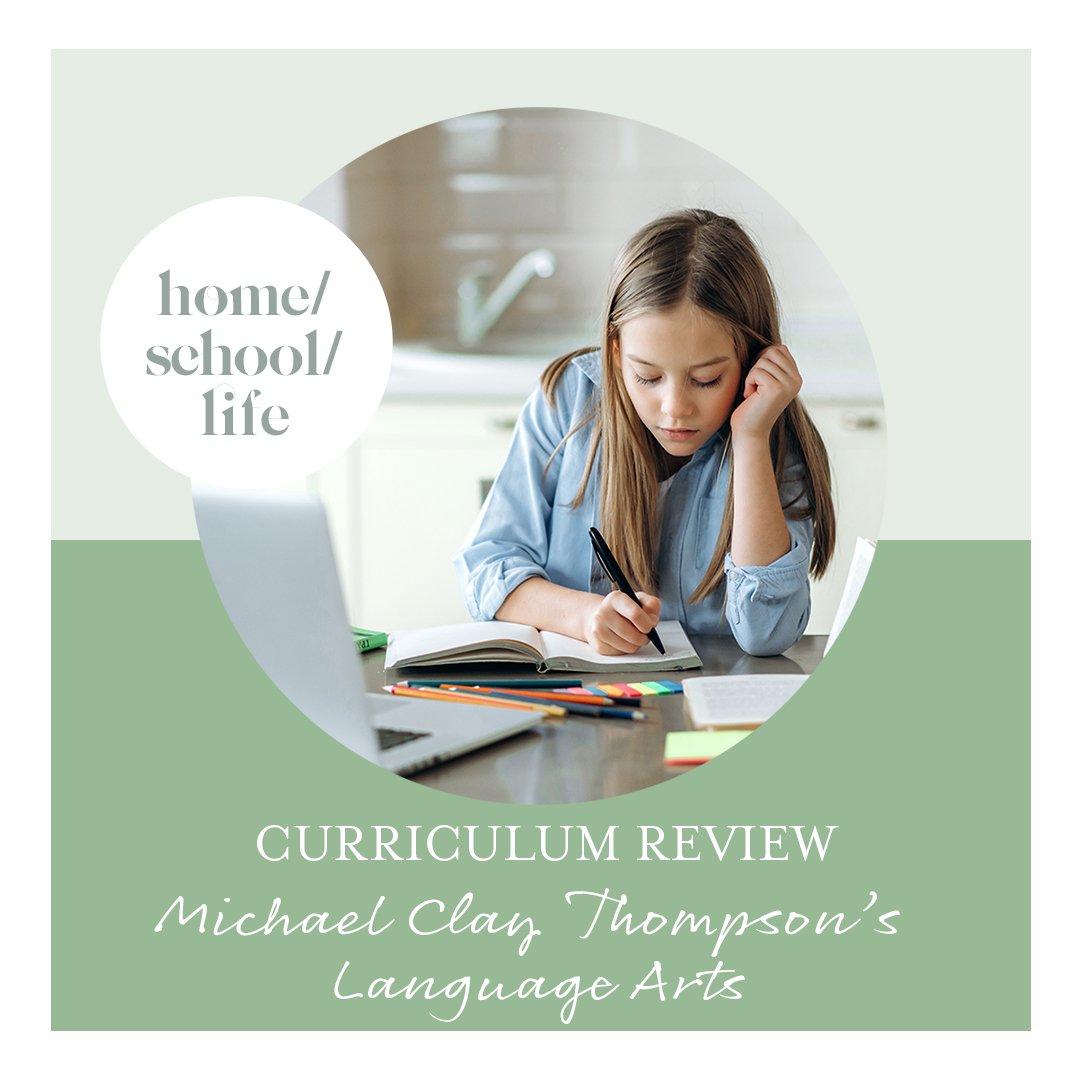
















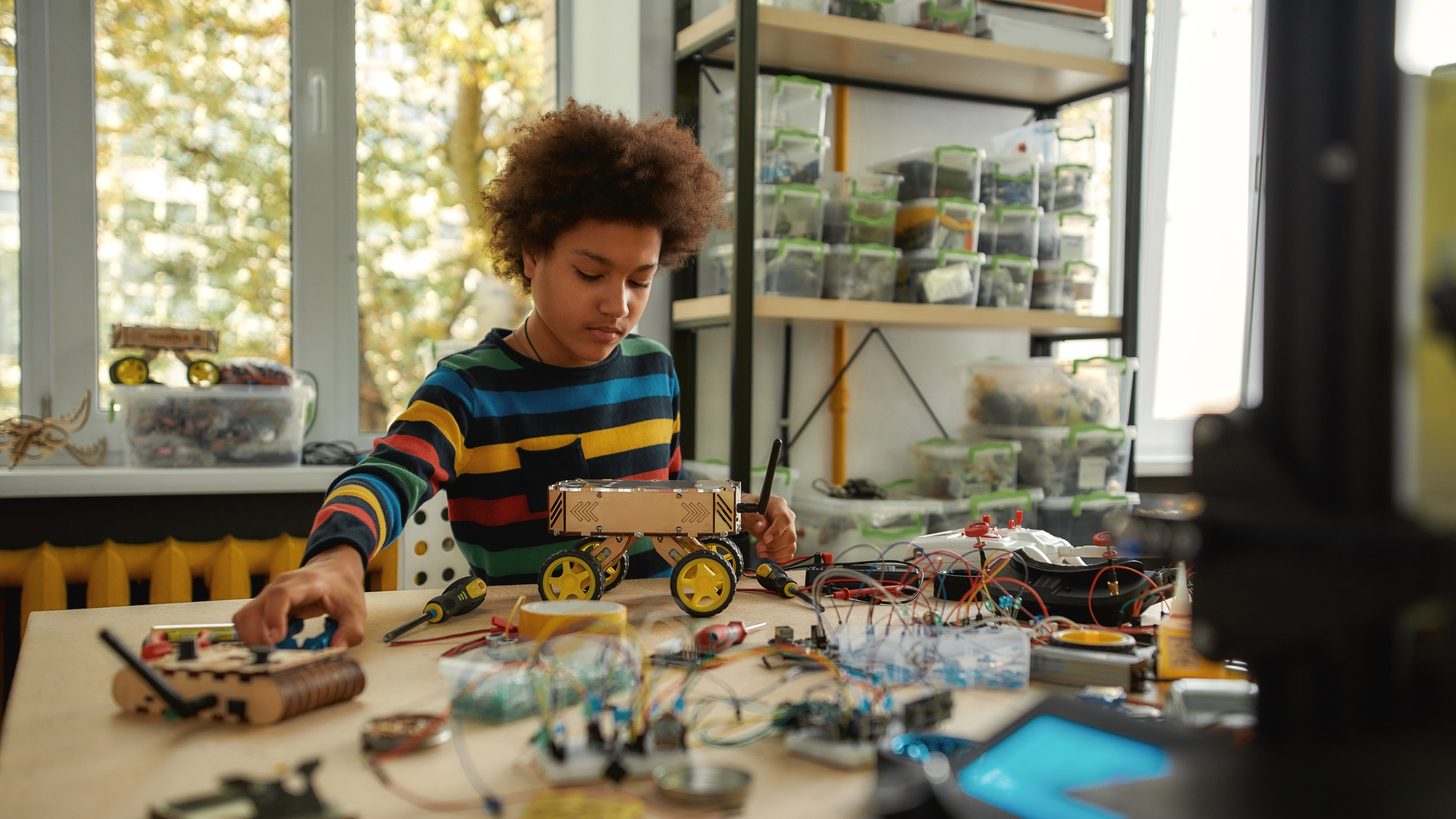
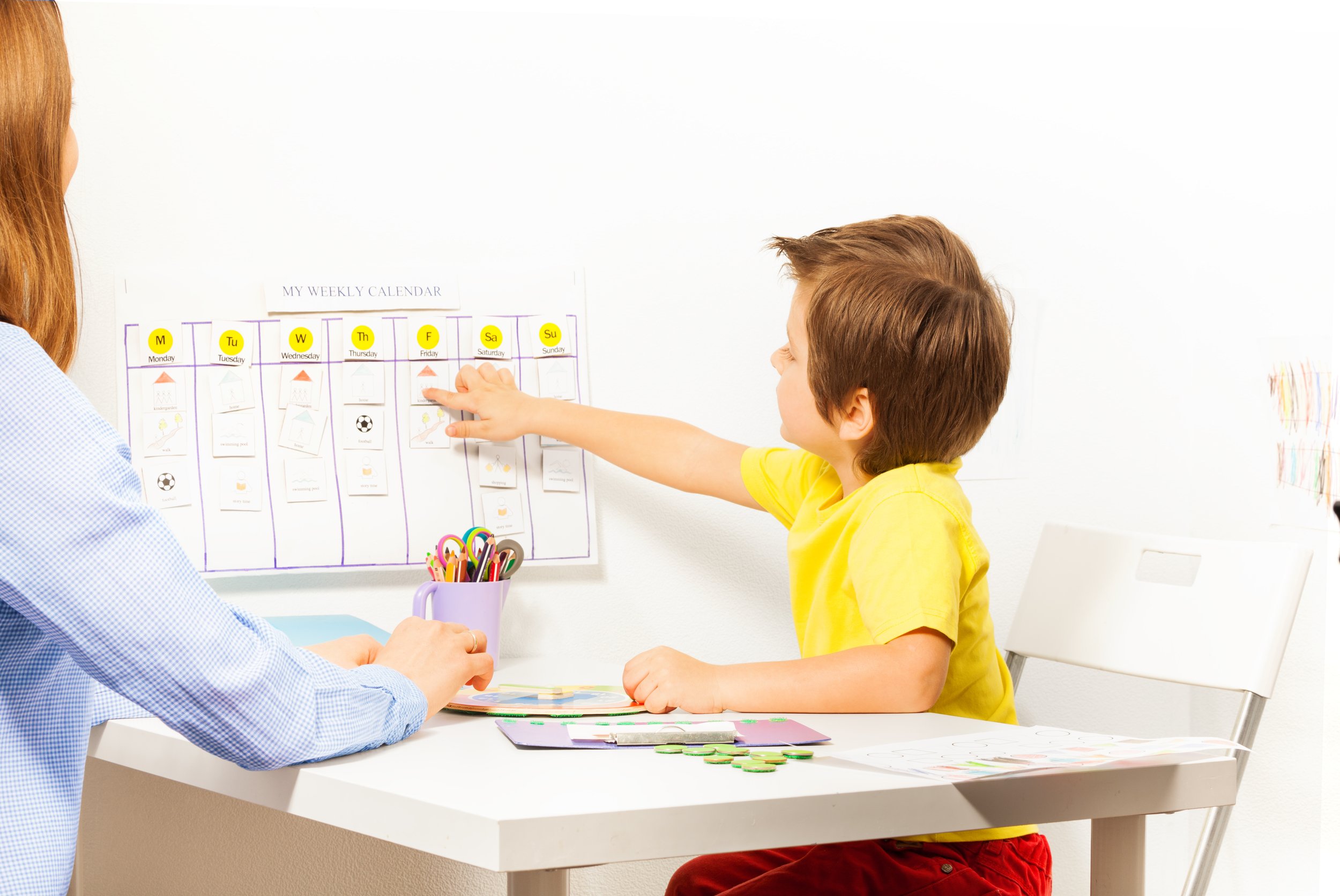




















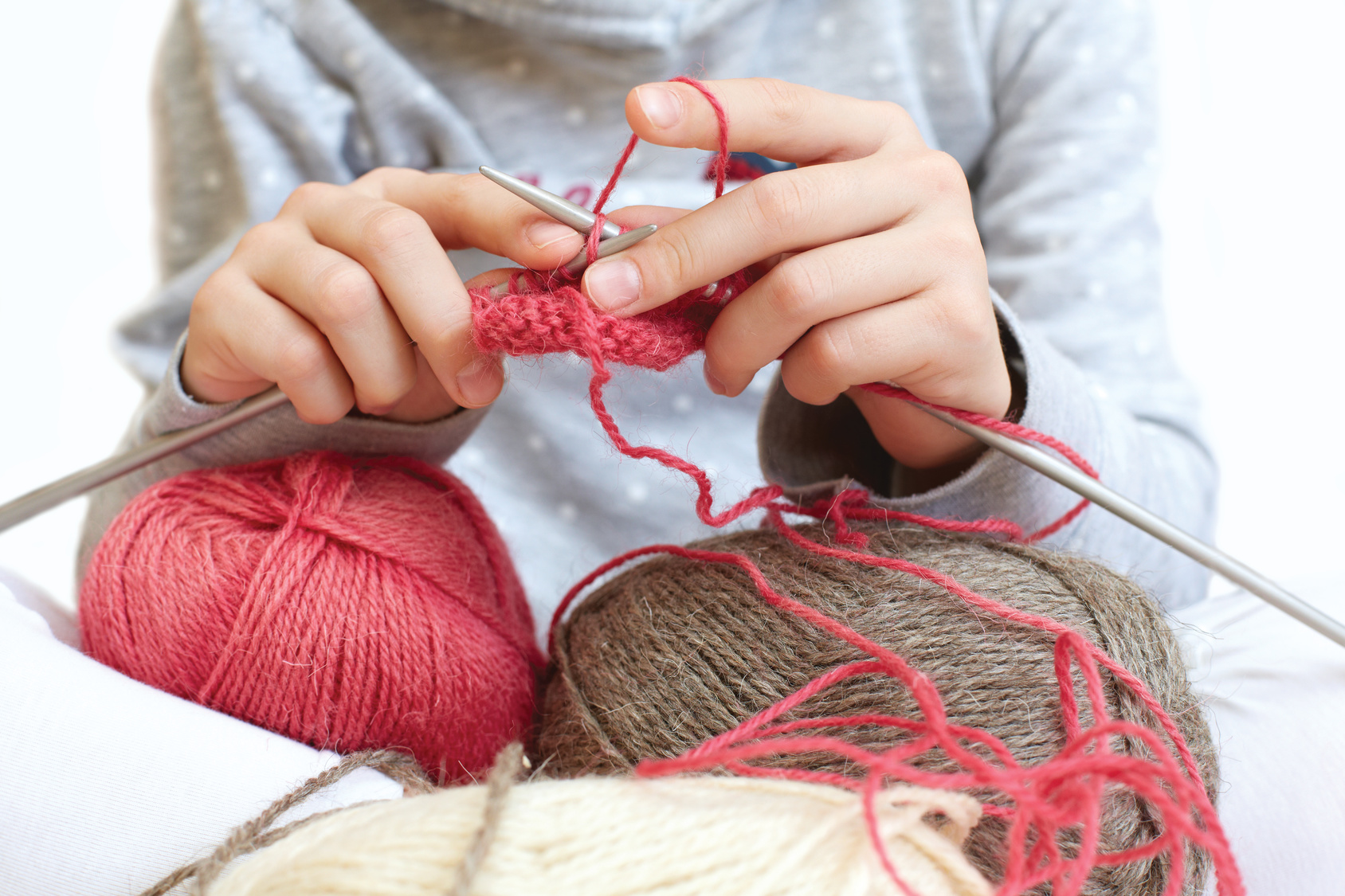

































































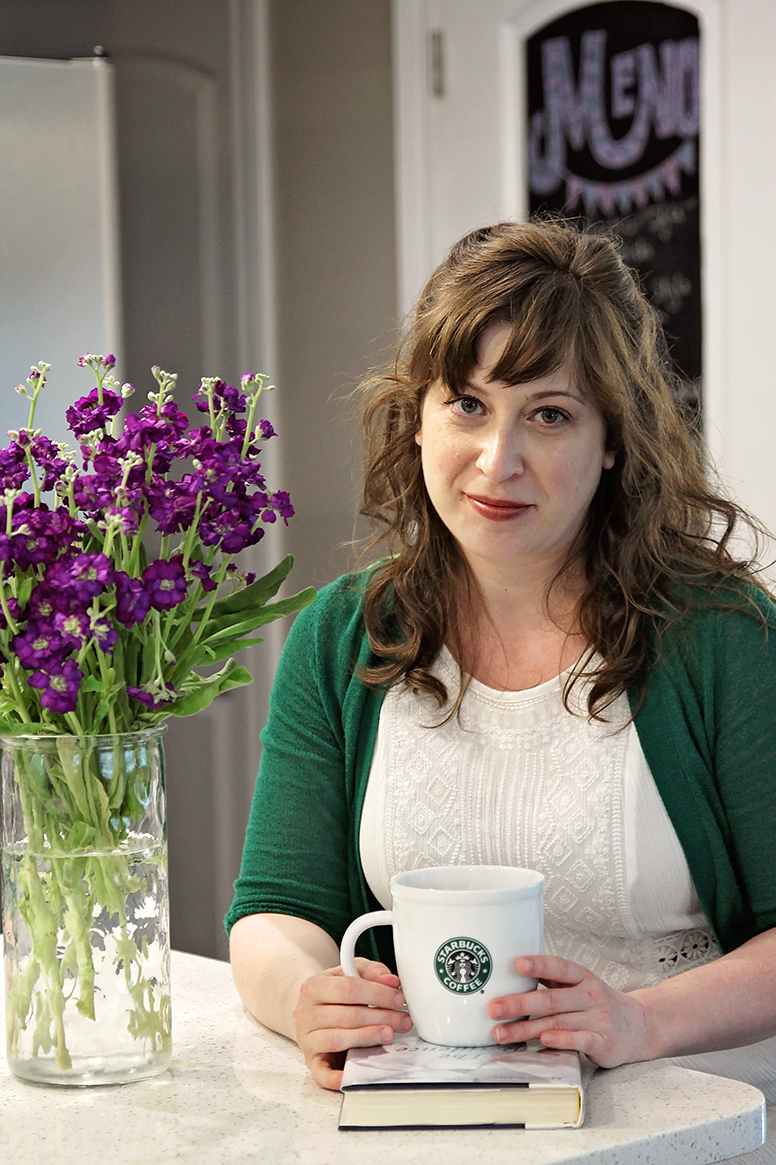




MAGGIE MARTIN writes about empowering kids to be enthusiastic readers and skilled writers at thelanguageartscoach.com. She frequently stays up way too late reading, but she rarely regrets it.